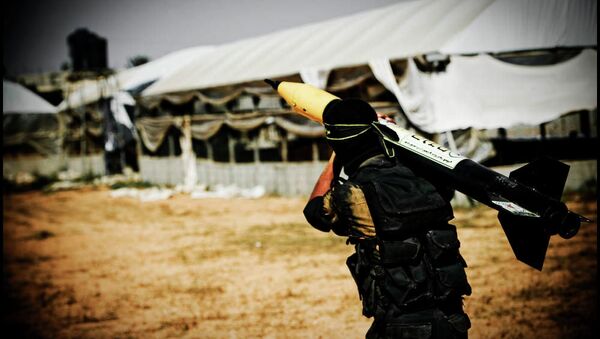Some 3,400 Europeans have taken part in the conflict in Syria, according to the Parliamentary Assembly's Political Affairs Committee, and there are more than 16,000 non-Europeans from 90 countries who are also part of the violence in the country.
Fellow Dr. Paulussen briefs @coe Parliamentary Assembly’s Committee on Polit. Affairs & Democracy on #ForeignFighters http://t.co/ZdTuYiFsVp
— ICCT — The Hague (@ICCT_TheHague) March 18, 2015
Experts told the committee that the "scale, pace and geographic scope" of the Syria foreign fighter phenomenon are unprecedented.
The committee was told that today's foreign fighters were extremely young and their knowledge of Islam generally quite superficial.
"The current foreign fighter phenomenon is part of a youth subculture that has developed against a very specific social and international context," said Rik Coolsaet from Ghent University.
"For a significant number of them, drugs, petty crime and street violence have been a part of their former life.
"One gets the impression of solitary individuals, estranged from family and friends who at a certain point became angry as a result of their estrangement. Going to Syria is one of a number of possible outlets for their anger."
New Plans to Prevent Travel to Conflict Zones
Christophe Paulussen, from the International Centre for Counter-Terrorism in The Hague, confirmed that some 12 percent of all the jihadist fighters convicted of terrorism-related activities in Europe between 2001 and 2009, had travelled abroad, either for ideological reasons, military training or participation in foreign conflicts.
"Absolute numbers are rising and with that the chance of an attack," he warned. "It is a priority to prevent jihadist travel, and to contain the potential risks posed by individuals returning from conflict zones," said Mats Benestad, coordinator of the Council of Europe CODEXTER Sub-Group on radicalisation.
He said that the Council of Europe was currently preparing a draft protocol to its Convention on the Prevention of Terrorism. It aims to criminalise travelling and the attempt to travel abroad for terrorist purposes, the funding and organisation of such travel, taking part in terrorist training and participation in a terrorist organisation.
Speed and Scale of Fighting set to "Swarm"
The Dutch General Intelligence and Security Service, AIVD, compared the suddenness, speed and scale of the departures to a 'swarm' — highly decentralised, with numerous individual and largely autonomous elements that collectively, maintain a cohesion and direction.
Islamic State's female bloggers draw European women to Syria —Police afraid,masked. http://t.co/L8TYNFpwgK #svpol pic.twitter.com/qpXOERoK0c
— Alexander (@Sverigefriend) January 13, 2015
In the absence of a strong hierarchy and leadership structures, the main driving force within the movement is the horizontal influence by friends, relatives, neighbours and other like-minded individuals, in both the online and offline world.
Benestad said "intense media exposure and the very professional use of social media by ISIL," contributed to the foreign fighter phenomenon.




